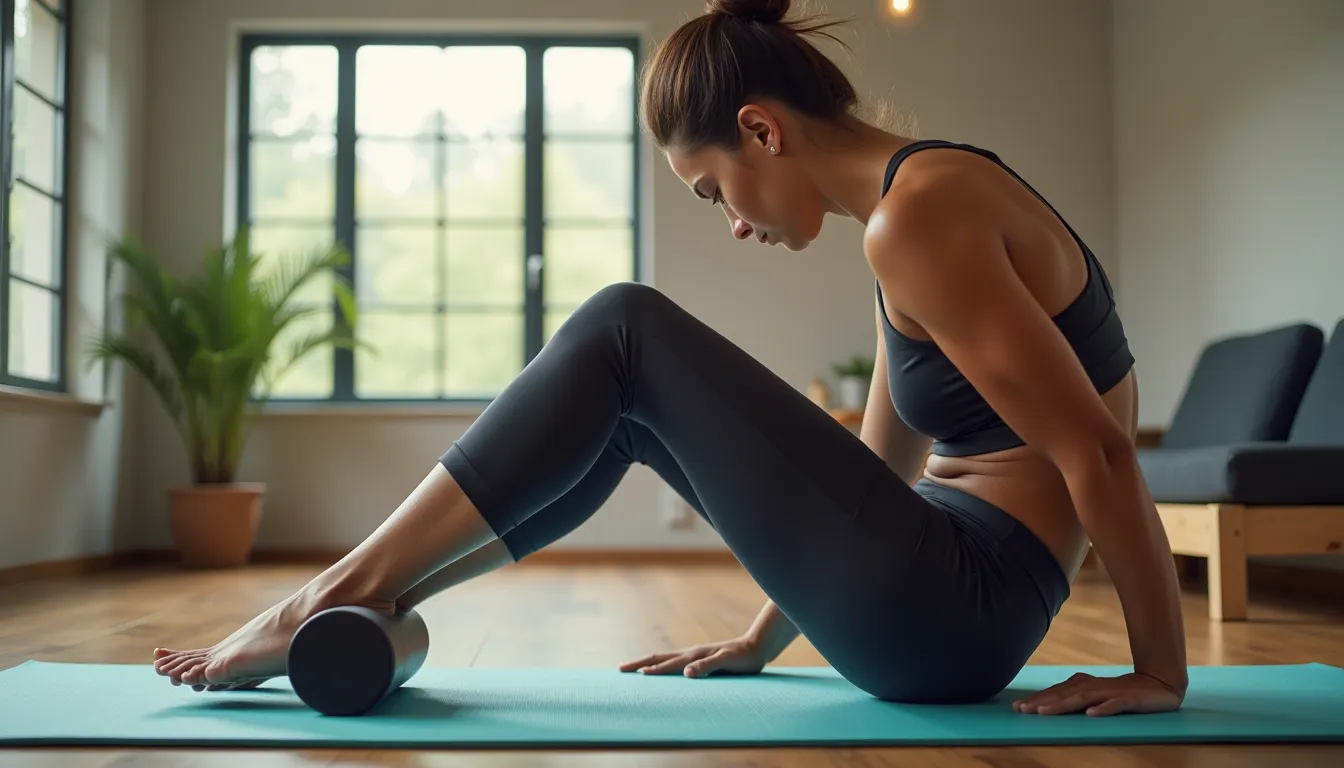Are you tired of muscle soreness holding you back from your fitness goals? Let’s uncover the secrets of muscle relief with a simple yet powerful tool: the foam roller. This unassuming cylinder can be your ticket to better recovery, increased flexibility, and improved overall performance. Join me as we dive into the world of foam rolling and discover how this technique can revolutionize your muscle care routine.
What Exactly Is a Foam Roller?
A foam roller is a cylindrical tool made of dense foam that allows you to apply pressure to specific muscle groups. Dr. Sarah Thompson, a sports physiotherapist at Austin Rehab Center, explains, “Foam rolling is essentially a form of self-massage that helps break down adhesions in the fascia, the connective tissue surrounding our muscles.” This process, known as self-myofascial release, can significantly reduce muscle tension and improve flexibility.
The Science Behind the Roll: How Does It Work?
When you use a foam roller, you’re applying pressure to your muscles and fascia. This pressure helps to:
- Increase blood flow to the muscles
- Break up scar tissue and adhesions
- Reduce inflammation
- Improve range of motion
Think of your muscles as a tangled ball of yarn. Foam rolling is like gently teasing out the knots, allowing the yarn (or in this case, your muscle fibers) to align properly and function more efficiently.
Unleashing the Power: Key Benefits of Foam Rolling
Incorporating foam rolling into your fitness routine can yield impressive results. Here are some of the top benefits:
- Reduced muscle soreness and fatigue
- Improved flexibility and range of motion
- Enhanced recovery after workouts
- Better posture and body awareness
Many athletes swear by foam rolling as part of their recovery routine, noting significant improvements in their performance and overall muscle health.
Rolling 101: How to Use a Foam Roller Effectively
Ready to give foam rolling a try? Here’s a quick guide to get you started:
- Identify the target area: Focus on tight or sore muscles.
- Position the roller: Place it under the muscle group you want to work on.
- Apply pressure: Use your body weight to control the intensity.
- Roll slowly: Move back and forth over the muscle for 30-60 seconds.
- Breathe: Don’t hold your breath – keep breathing steadily throughout.
Remember, foam rolling should be uncomfortable but not painful. If you experience sharp pain, stop immediately and consult a healthcare professional.
Targeting Trouble Spots: Key Areas for Foam Rolling
While you can use a foam roller on most major muscle groups, some areas benefit particularly from this technique:
- Quadriceps: Great for runners and cyclists
- IT Band: Helps alleviate knee pain
- Upper back: Perfect for desk workers
- Calves: Ideal for those on their feet all day
Incorporating foam rolling into your leg strengthening routine can lead to better balance and overall lower body health.
When and How Often Should You Roll?
Fitness expert Mike Johnson recommends, “For optimal results, aim to foam roll for 5-10 minutes before and after your workouts. If you’re new to it, start with 2-3 times a week and gradually increase as your body adapts.” Consistency is key – make foam rolling a regular part of your fitness routine to see the best results.
Beyond Muscles: Unexpected Benefits of Foam Rolling
Interestingly, foam rolling isn’t just about muscle relief. Some studies suggest it may also help:
- Reduce stress and promote relaxation
- Improve sleep quality
- Enhance overall body awareness
Many people find that regular foam rolling, combined with daily stretching, can significantly reduce stress levels and improve overall well-being.
Real-Life Success: A Foam Rolling Testimonial
Sarah, a 45-year-old marathon runner, shares her experience: “I was skeptical at first, but after incorporating foam rolling into my routine, I noticed a significant decrease in post-run soreness. It’s become an essential part of my training, helping me recover faster and prevent injuries.”
Is Foam Rolling Right for Everyone?
While foam rolling is generally safe, it’s not suitable for everyone. Dr. Thompson advises, “People with certain conditions like deep vein thrombosis, severe osteoporosis, or skin infections should avoid foam rolling or consult their doctor first.” If you have any concerns, it’s always best to check with a healthcare professional before starting a new fitness routine.
Are you ready to roll your way to better muscle health? Remember, like any fitness technique, consistency is key. Start slowly, listen to your body, and gradually incorporate foam rolling into your routine. Your muscles will thank you, and you might just find yourself moving with more ease and less pain. Why not give it a try and see how it can transform your fitness journey?
